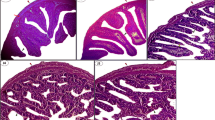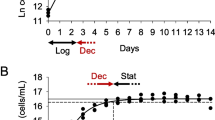Abstract
To our knowledge, little information is available on approaches to improving gonad flavor of sea urchins. Although sea urchins fed high content of glutamate and glycine perceived sweeter gonads than those fed high content of valine and methionine (Phillips et al. in Aquaculture 288:205–215, 2009), the problem of improving gonad quality has not been completely solved. Because of the high cost of glutamate and glycine, it is hard to move this finding from the laboratory to gonad production. In the present study, we found that gonad flavor of Strongylocentrotus intermedius fed banana peel was significantly better than that of individuals fed kelp or pumpkin (P < 0.001). However, banana peel did not significantly support gonad yield of sea urchins compared with kelp (P < 0.05). This novel finding provides a new insight into the gonad quality improvement in sea urchins. Further studies should be carried out to test our two suggested methods of banana peel application in sea urchin aquaculture.
Similar content being viewed by others
References
Black R, Codd C, Hebbert D, Vink S, Burt J (1984) The functional significance of the relative size of Aristotle’s lantern in the sea urchin Echinometra mathaei (de Blainville). J Exp Mar Biol Ecol 77:81–97
Chang YQ, Ding J, Song J, Yang W (2004) Biology research and breeding of Sea cucumber and sea urchin. Ocean Press, Beijing (In Chinese)
Chang YQ, Lawrence JM, Cao XB, Lawrence AL (2005) Food consumption, absorption, assimilation and growth of the sea urchin Strongylocentrotus intermedius fed a prepared feed and the alga Laminaria japonica. J World Aquacult Soc 36:68–75
Chang YQ, Zhang WJ, Zhao C, Song J (2012) Estimates of heritabilities and genetic correlations for growth and gonad traits in the sea urchin Strongylocentrotus intermedius. Aquac Res 43:271–280
Ebert TA (1980) Relative growth of sea urchin jaws: an example of plastic resource allocation. B Mar Sci 30:467–474
El-Saidy D, Gaber M (2005) Effect of dietary protein levels and feeding rates on growth performance, production traits and body composition of Nile tilapia, Oreochromis niloticus (L.) cultured in concrete tanks. Aquac Res 36:163–171
Fuke S, Konosu S (1991) Taste-active components in some foods: a review of Japanese research. Physiol Behav 49:863–868
Gonzalez E, Montenegro MA, Nazareno MA, Lopez de Mishima BA (2001) Carotenoid composition and vitamin a value of an Argentinian squash (Cucurbita moschata). Arch Latinoam Nutr 51:39–399
Haugan JA, Liaaen-Jensen S (1994) Algal carotenoids 54. Carotenoids of brown algae (Phaeophyceae). Biochem Syst Ecol 22:31–41
Hoshikawa H, Takahashi K, Sugimoto T, Tsuji K, Nobuta S (1998) The effects of fish meat feeding on the gonad quality of cultivated sea urchins, Strongylocentrotus nudus (A. Agassiz). Sci Rep Hokkaido Fish Exp Stn 52:17–24
Lawrence JM, Olave S, Otaiza R, Lawrence AL, Bustos E (1997) Enhancement of gonad production in the sea urchin Loxechinus albus in Chile fed extruded feeds. J World Aquacult Soc 28:91–96
Lawrence JM, Lawrence AL, Watts SA (2007) Feeding, digestion, and digestibility. In: Lawrence JM (ed) Edible Sea Urchins. Elsevier Science B.V, Amsterdam, pp 135–158
Lawrence JM, Cao XB, Chang YQ, Wang P, Yu Y, Lawrence AL, Watts SA (2009) Temperature effect on feed consumption, absorption and assimilation efficiencies and production of the sea urchin Strongulocentrous internedius. J Shellfish Res 28:389–395
Lawrence JM, Chang YQ, Cao XB, Lawrence AL, Watts SA (2011) Potential for production of uni by Strongylocentrotus intermedius using dry formulated feeds. J World Aquacult Soc 42:253–260
Levitan DR (1991) Skeletal changes in the test and jaws of the sea urchin Diadema antillarum in response to food limitation. Mar Biol 111:431–435
Li R, Chen R, Xiao Z (2001) The analysis of the nutritional components of banana peel. J Zhanjang Norm Coll 22:42–45 (in Chinese with English abstract)
Liyana-Pathirana C, Shahidi F, Whittick A, Hooper R (2002) Effect of season and artificial diet on amino acids and nucleic acids in gonads of green sea urchin Strongylocentrotus droebachiensis. Comp Biochem Phys A 133:389–398
Matsuno T, Tsushima M (2001) Carotenoids in sea urchins. In: Lawrence JM (ed) Edible sea urchins: biology and ecology. Elsevier Science B.V, Amsterdam, pp 115–138
McBride SC, Price RJ, Tom PD, Lawrence JM, Lawrence AL (2004) Comparison of gonad quality factors: color, hardness and resilience of Strongylocentrotus franciscanus between sea urchins fed prepared feed or algal diets and sea urchins harvested from the Northern California fishery. Aquaculture 233:405–422
Murkovic M, Mülleder U, Neunteufl H (2002) Carotenoid content in different varieties of pumpkins. J Food Compos Anal 15:633–638
Osako K, Fujii A, Ruttanapornvareesakul Y, Nagano N, Kuwahara K, Okamoto A (2007) Differences in free amino acid composition between testis and ovary of sea urchin Anthocidaris crassispina during gonadal development. Fish Sci 73:660–667
Pearce CM, Daggett TL, Robinson S (2002) Effect of protein source ratio and protein concentration in prepared diets on gonad yield and quality of the green sea urchin, Strongylocentrotus droebachiensis. Aquaculture 214:307–332
Phillips K, Bremer P, Silcock P, Hamid N, Delahunty C, Barker M, Kissick J (2009) Effect of gender, diet and storage time on the physical properties and sensory quality of sea urchin (Evechinus chloroticus) gonads. Aquaculture 288:205–215
Phillips K, Hamid N, Silcock P, Sewell MA, Barker M, Weaver A, Then S, Delahunty C, Bremer P (2010) Effect of manufactured diets on the yield, biochemical composition and sensory quality of Evechinus chloroticus sea urchin gonads. Aquaculture 308:49–59
Plank LR, Laqwrence JM, Lawrence AL, Olvera RM (2002) The effect of dietary carotenoids in prepared diets on gonad production and carotenoid profiles in the sea urchin Lytechinus variegatus. J World Aquacult Soc 33:127–137
Poorbagher H, Lamare MD, Barker MF (2010) Effects of nutrition on somatic growth and reproductive strategy of the sea urchin Pseudechinus huttoni. Mar Biol Res 6:292–301
Shpigel M, Schlosser SC, Ben-Amotz A, Lawrence AL, Lawrence JM (2006) Effects of dietary carotenoid on the gut and the gonad of the sea urchin Paracentrotus lividus. Aquaculture 261:1269–1280
Song W, Xu Y (2005) Study on the comprehensive utilization of banana peel. J Qiongzhou Univ 12:38–40 (in Chinese with English abstract)
Subagio A, Morita N, Sawada S (1996) Carotenoids and their fatty-acid esters in banana peel. J Nutr Sci Vitaminol 42:553–566
Suckling CC, Symonds RC, Kelly MS, Young AJ (2011) The effect of artificial diet on gonad color and biomass in the edible sea urchin Psammechinus miliaris. Aquaculture 318:335–342
Symonds R, Kelly M, Suckling C, Young A (2009) Carotenoids in the gonad and gut of the edible sea urchin Psammechinus miliaris. Aquaculture 288:120–125
Thomas SF (2010) Translocation of Evechinus chloroticus in the SUR 5 Fishery and the reproductive potential of large urchins. University of Otago, Diss
Zhao C, Zhang WJ, Chang YQ, Zhou HS, Song J, Luo SB (2013) Effects of continuous and diel intermittent feeding regimes on food consumption, growth and gonad production of the sea urchin Strongylocentrotus intermedius of different size classes. Aquacult Int 21:699–708
Zuo RH, Yu DL, Yu DY, Chen NF, Tao LL (2009) Experiment on the effect of feeding broiler banana peel feed additive. Animal Husb Feed Sci 30:25–26 (in Chinese with English abstract)
Acknowledgments
This work was supported by the Chinese National 863 Project (2012AA10A412) and an open funding from Key Laboratory of Healthy Mariculture for the East China Sea, Ministry of Agriculture, China. We thank Prof. John Lawrence for providing useful academic and editorial suggestions. We are also grateful to Yue Ben, Dengbing Xiao, Deliang Yu, Jingyang Yu, Xiaohu Mu and Yunxia Li for sample collection and measurements.
Author information
Authors and Affiliations
Corresponding author
Additional information
Shibin Luo and Chong Zhao have contributed equally to this work.
Rights and permissions
About this article
Cite this article
Luo, S., Zhao, C., Chang, Y. et al. Banana peel provides a new insight into improving gonad flavor in the sea urchin Strongylocentrotus intermedius . Aquacult Int 22, 833–841 (2014). https://doi.org/10.1007/s10499-013-9711-0
Received:
Accepted:
Published:
Issue Date:
DOI: https://doi.org/10.1007/s10499-013-9711-0




